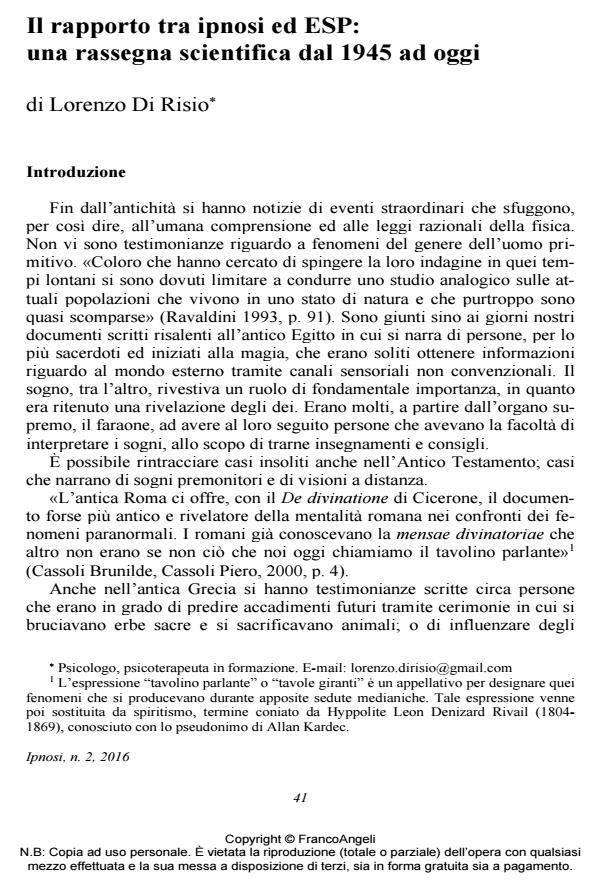Il rapporto tra ipnosi ed ESP: una rassegna scientifica dal 1945 ad oggi
Journal title IPNOSI
Author/s Lorenzo Di Risio
Publishing Year 2016 Issue 2016/2
Language Italian Pages 20 P. 41-60 File size 251 KB
DOI 10.3280/IPN2016-002003
DOI is like a bar code for intellectual property: to have more infomation
click here
Below, you can see the article first page
If you want to buy this article in PDF format, you can do it, following the instructions to buy download credits

FrancoAngeli is member of Publishers International Linking Association, Inc (PILA), a not-for-profit association which run the CrossRef service enabling links to and from online scholarly content.
The aim of this paper is to analyze the concept of ESP, acronym of Extra-Sensory Perception (Rhine, 1934) and to explore the existence of any form of relation of the ESP phenomena with hypnosis. First, the focus will be on the discipline which has been involved in the relationship between the human being and some strange kinds of phenomena, called ESP: the Parapsychology. Then the focus will be on ESP phenomena: what is exactly the ESP and how it is classified according to the researchers. The next paragraphs will explore the alleged connection between hypnosis and the occurrence of ESP abilities during the hypnotic trance. We will then report a number of studies made in research laboratories, under strict control conditions, following an historical-temporal path of the main scientific research on this subject. The research finding in some cases, seem to support a positive relationship; in others, vice versa, would seem deny any relationship. The results will then be globally discussed in the last section.
Keywords: ESP, extra-sensory perception, hypnosis, parapsychology.
Lorenzo Di Risio, Il rapporto tra ipnosi ed ESP: una rassegna scientifica dal 1945 ad oggi in "IPNOSI" 2/2016, pp 41-60, DOI: 10.3280/IPN2016-002003